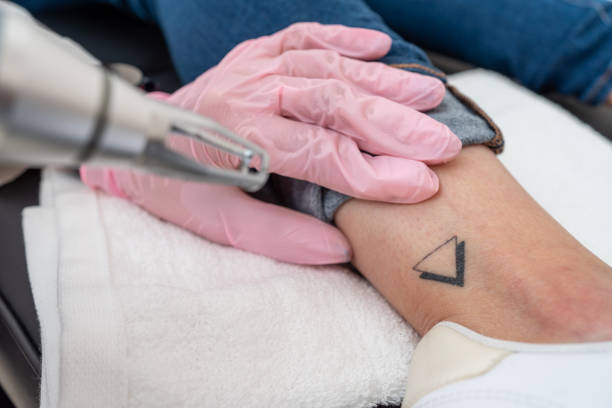Hair loss is a concern that affects both men and women, often causing distress and self-esteem issues. With so many potential causes—from genetics to lifestyle to medical conditions—proper diagnosis becomes the key to effective treatment. This is where the role of a trichologist becomes essential. The Best Trichologist in Dubai doesn’t just prescribe products—they investigate the root causes of hair loss using a combination of clinical evaluation, advanced technologies, and personalized care strategies.
What Is a Trichologist?
A trichologist is a specialist trained in diagnosing and treating hair and scalp disorders. They are not dermatologists, but they often work closely with medical professionals to address more complex issues. Trichologists deal with a wide range of concerns such as thinning hair, excessive shedding, hair breakage, alopecia, and scalp conditions like dandruff and psoriasis.
Why a Diagnosis Matters
Hair loss is often just a symptom of something larger. It may indicate hormonal imbalance, autoimmune diseases, nutritional deficiencies, or scalp infections. Misdiagnosis or self-diagnosis can lead to wasted time, money, and further damage. That’s why a structured, evidence-based diagnosis by a trichologist is so vital.
How the Best Trichologist in Dubai Diagnoses Hair Loss?
The diagnostic process typically involves several key steps. Here’s a breakdown:
Initial Consultation and Patient History
The trichologist begins with an in-depth conversation to understand the patient’s:
- Hair loss pattern and duration
- Medical history (thyroid, autoimmune issues, etc.)
- Lifestyle habits (stress, sleep, exercise)
- Diet and nutrition
- Hair care routine
- Family history of baldness
Purpose: To identify potential internal or external triggers that may not be visible on the scalp.
Scalp and Hair Examination
A physical inspection allows the trichologist to look for signs of:
- Inflammation
- Scarring
- Hair density variations
- Scalp infections (fungal or bacterial)
- Dandruff or seborrheic dermatitis
This initial examination helps distinguish between non-scarring and scarring types of alopecia.
Trichoscopy (Scalp Microscopy)
Using a dermatoscope, the trichologist magnifies the scalp to analyze:
| Parameter | What It Reveals |
|---|---|
| Hair shaft diameter | Thinning pattern or miniaturization |
| Follicular density | Severity and spread of hair loss |
| Inflammation markers | Possible scalp conditions like psoriasis or eczema |
| Hair growth phase ratio | Ratio of growing to shedding hairs |
Purpose: Provides high-resolution visualization of hair follicles and helps in differential diagnosis.
Hair Pull Test and Wash Test
These simple manual tests determine the degree of active shedding:
| Test Type | Procedure | Diagnostic Value |
|---|---|---|
| Hair Pull Test | Gently pulling a cluster of 40–60 hairs | >10 hairs = active shedding |
| Hair Wash Test | Counting hairs lost during washing | Confirms telogen effluvium or other |
Hair Shaft Analysis
Sometimes, hair samples are collected and sent for microscopic analysis to check for:
- Hair shaft abnormalities
- Breakage patterns
- Damage from styling or chemical treatments
This helps in distinguishing between breakage and hair fall from the root.
Blood Tests
Although a trichologist may not order these directly, they often refer clients for:
| Blood Test | What It Detects |
|---|---|
| CBC (Complete Blood Count) | Anemia or infection |
| Thyroid Panel (TSH, T3, T4) | Hypo- or hyperthyroidism |
| Ferritin | Iron deficiency (common cause of hair loss) |
| Vitamin D | Linked with autoimmune hair disorders |
| Hormonal Profile | PCOS, menopause, or androgenetic alopecia |
Photographic Evidence
Before-and-after photos are often taken to:
- Track progress
- Motivate patients
- Serve as visual documentation of treatment effectiveness
These images are taken under standardized lighting and angles for accuracy.
Common Diagnoses Made by Trichologists
| Diagnosis Type | Description | Common in |
|---|---|---|
| Androgenetic Alopecia | Genetic hair thinning (male/female pattern baldness) | Adults |
| Telogen Effluvium | Stress-related sudden shedding | Postpartum, illness |
| Alopecia Areata | Autoimmune patchy hair loss | All ages |
| Traction Alopecia | Hair loss from tight styles | Women with braids/extensions |
| Scalp Psoriasis/Seborrhea | Scalp inflammation and flaking | Those with skin issues |
Trichologist vs Dermatologist: What’s the Difference?
| Factor | Trichologist | Dermatologist |
|---|---|---|
| Specialization | Hair and scalp issues only | Skin, nails, hair, and mucous membranes |
| Medical Qualification | May not be a licensed doctor | Licensed medical doctor |
| Prescriptions | Limited to OTC products | Can prescribe medications |
| Diagnostic Tools | Scalp-focused tests | Can order skin biopsies, etc. |
Note: The best outcomes often come from collaboration between both specialists.
Benefits of Seeing a Trichologist
- Personalized treatment plans
- Early detection of underlying health issues
- Access to non-invasive therapies like LED therapy, PRP, or microneedling
- Education on proper hair care and nutrition
Diagnostic Technologies Used by the Best Trichologist in Dubai
The top clinics and trichologists in Dubai use advanced tools such as:
| Technology | Function |
|---|---|
| Video Trichoscopy | High-resolution scalp imaging |
| AI-based Hair Mapping | Digital mapping of hair density and loss |
| 3D Scalp Scanning | Visual representation of follicular health |
| Genetic Testing | Assesses risk of hereditary baldness |
These tools offer detailed, accurate insights that lead to more precise treatment plans.
What Happens After the Diagnosis?
Following diagnosis, the trichologist will craft a personalized plan that may include:
- Nutritional supplements
- Topical solutions (minoxidil, peptides)
- Lifestyle changes (stress reduction, sleep habits)
- Scalp treatments (cleansing, exfoliation)
- Advanced treatments (PRP, mesotherapy, laser therapy)
How Long Does Diagnosis Take?
| Diagnostic Step | Time Required |
|---|---|
| Initial Consultation | 30–45 minutes |
| Scalp Examination & Tests | 20–30 minutes |
| Lab Test Results (if any) | 3–5 working days |
| Final Diagnosis | Within 1 week |
FAQ’s
Can a trichologist cure hair loss completely?
Not always, but they can control it significantly and sometimes reverse it, depending on the cause.
How often should I visit a trichologist?
Usually once every 4–6 weeks during treatment, then less frequently for maintenance.
. Is the diagnosis painful?
No, most diagnostic procedures are non-invasive and painless.
Do trichologists treat dandruff and itchy scalp?
Yes, they address scalp conditions as well as hair loss.
Can stress really cause hair loss?
Absolutely. Stress is a major trigger for telogen effluvium and other hair disorders.
Final Thoughts
Accurate diagnosis is the cornerstone of effective hair loss treatment. The Best Trichologist doesn’t rely on guesswork; they use clinical methods, technological tools, and holistic understanding to uncover the true cause of your hair concerns. Whether it’s a vitamin deficiency, hormonal shift, or an autoimmune issue, a trichologist’s approach ensures the treatment is targeted and effective.




